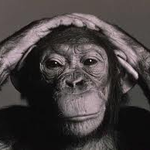Copy link to clipboard
Copied
I have a number of textFrames (area text), most of which contain a single line of text which is narrower than the width of the textFrame.
I'm trying to get the width of the string in points and I'm stumped... I tried:
textPath.width
textPath.pathPoints[1].anchor[0]
What is the right way of doing this?
Any help greatly appreciated.
// Tom
 1 Correct answer
1 Correct answer
Hi Tom, I can replicate your issue, I checked my notes and in fact I had noticed the reference gets lost after converting to PointText but couldn't remember. Since the dup text frame gets selected after duplicating, we'll put this selection right back into our variable.
insert these two lines after duplicating your text frame
app.redraw();
vPointTextCopy = selection[0];
Let me know if that works, if not we'll look into other workarounds
Explore related tutorials & articles
Copy link to clipboard
Copied
you could make a copy of the Area text and convert it to point text. The bounding box will shrink to the size of the text,, then just get the point text width
Copy link to clipboard
Copied
Hi Carlos,
Many thanks. This sounds like a good plan but I have problems implementing it.
Contrary to what the docs say, the call convertareaobjecttopointobject returns nil rather than a point text object. And it does not seem to convert the current area text object either.
Any ideas?
Copy link to clipboard
Copied
Hi Tom, convertAreaObjectToPointObject() doesn't return anything, it just converts the duplicate to point text
your script works fine here, is it not working for you? do you get any errors?
Copy link to clipboard
Copied
Hi Carlos,
Thank you for clarifying, I got confused by the documentation which seems to suggest a return type:
I can now convert area text to point text but I still have problems picking up the width (and height if that is possible) of the point text.
My artboard looks like this when the text is still area text:
My layer structure looks like this:
And my code like this. I get an error when I try to remove the duplicate which I converted to point text. And the rectangles don't pick up the new size but stick to the old size.
for (var i = 0; i < myDocument.layers["Text"].pageItems.length; i++)
{
var vParent = myDocument.layers["Text"].pageItems[i]; // get the elements of the group
var vNumbers = vParent.pageItems.length; // numbers of elements
for ( var j = vNumbers - 1; j >= 0 ; j-- ) {
var vChild = vParent.pageItems[j];
var vPointTextCopy = vChild.duplicate();
var gB = vPointTextCopy.geometricBounds; // left, top, right, bottom
var w = Math.abs(gB[2] - gB[0]);
var h = Math.abs(gB[3] - gB[1]);
var top = gB[1];
var left = gB[0];
app.redraw();
var rect = myDocument.layers["TestRectLayer"].pathItems.rectangle(top, left, w, h); // de oorsprong ligt linksonder
rect.name = "TestRect";
rect.stroked = true;
rect.filled = false;
rect.strokeWidth = 3;
rect.strokeColor = redColor;
vPointTextCopy.remove(); // throws an error
}
}
So I get:
And I'm stuck with the point text objects which I can't remove. It appears as if the pointers still point to the original objects.
Any help greatly appreciated.
// Tom
Copy link to clipboard
Copied
Hi Tom, I can replicate your issue, I checked my notes and in fact I had noticed the reference gets lost after converting to PointText but couldn't remember. Since the dup text frame gets selected after duplicating, we'll put this selection right back into our variable.
insert these two lines after duplicating your text frame
app.redraw();
vPointTextCopy = selection[0];
Let me know if that works, if not we'll look into other workarounds
Copy link to clipboard
Copied
Thank you so much, Carlos. This works! BTW, is this the most efficient way to set the dimensions of a rectangle from geometricbounds? I find the distinction between [x1, y1, x2, y2] and [top, left, bottom, right] quite confusing.
for ( var j = vNumbers - 1; j >= 0 ; j-- ) {
var vChild = vParent.pageItems[j];
vPointTextCopy = vChild.duplicate();
vPointTextCopy.convertAreaObjectToPointObject();
app.redraw();
vPointTextCopy = selection[0]; // this is a hack to recover the lost pointer
var gB = vPointTextCopy.geometricBounds; // left, top, right, bottom
var w = Math.abs(gB[2] - gB[0]);
var h = Math.abs(gB[3] - gB[1]);
var top = gB[1];
var left = gB[0];
var rect = myDocument.layers["TestRectLayer"].pathItems.rectangle(top, left, w, h); // de oorsprong ligt linksonder
rect.name = "TestRect";
rect.stroked = true;
rect.filled = false;
rect.strokeWidth = 3;
rect.strokeColor = redColor;
}
Copy link to clipboard
Copied

Copy link to clipboard
Copied
yeah, that's the correct way, bounds are a little confusing at first but easy once you get the hang of it.
femke's diagram should help visualizing it
Copy link to clipboard
Copied
Thank you, both. What I actually meant is the conversion from geometricBounds to Rect and whether this is necessary in the first place. Is it not possible to initialise a Rect with a geometricBounds array? Or get the Rect of a Point Type Textframe?
What I was hoping for is:
myDocument.layers["TestRectLayer"].pathItems.rectangle(vPointTextCopy.rect);
or
myDocument.layers["TestRectLayer"].pathItems.rectangle(vPointTextCopy.geometricBounds);
It seems funny to have two data structures which contain essentially the same information without standard conversion functions.
Copy link to clipboard
Copied
I see what you mean, and no, unfortunately we can't pass a bounding array to the Rectangle function
but you could create your own function if you need to make this often







